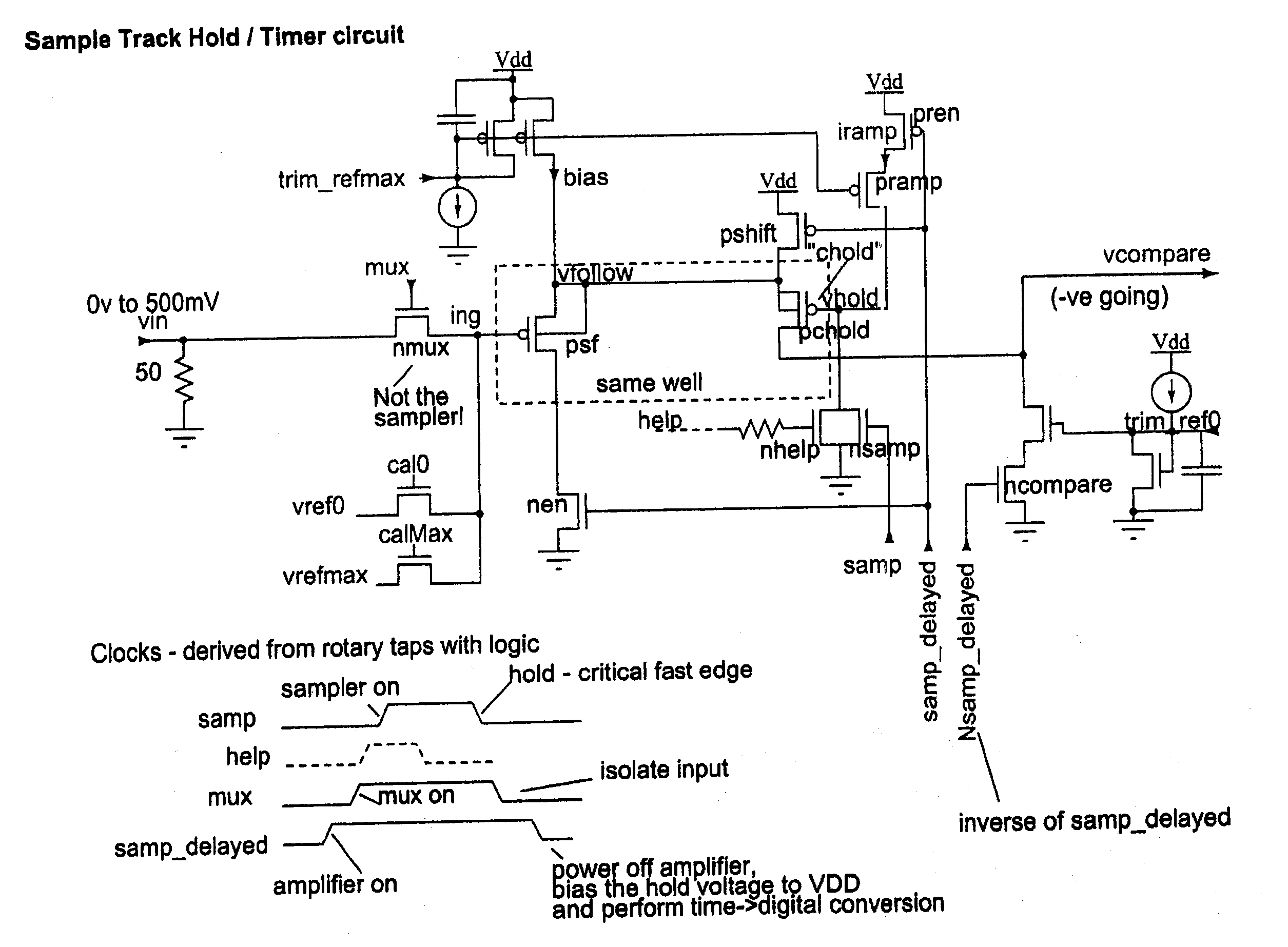Rotary flash ADC
a technology of rotary oscillator and analogtodigital converter, which is applied in the direction of pulse automatic control, electric analogue stores, instruments, etc., can solve the problems of difficult calibration, large amount of power and area of flash converters, etc., and achieve the effect of high conversion accuracy
- Summary
- Abstract
- Description
- Claims
- Application Information
AI Technical Summary
Benefits of technology
Problems solved by technology
Method used
Image
Examples
Embodiment Construction
Overall Operating Principle
[0018] The basic operating principle is that of single-slope ADC conversion using a track-and-hold sampler on the input and a multiphase time-to-digital conversion on the output. Fragmentation and interleaving of the ADC construction allows for transparent self-calibration while conversions are in progress.
[0019]FIG. 1 is the simplified diagram of the new sampler and converter technique constructed on a low cost digital CMOS process where only the PFETs have independent wells (NFET circuits could be used on a true twin-tub process). At the front-end is a voltage buffer and a track and hold circuit. An input multiplexer (not a sampler) is provided to allow auto-calibration, etc. The track and hold circuit shown is a PFET source follower and the sampler capacitor is chosen to be a PFET enhancement mode capacitance formed in transistor PHOLD (which also doubles as the comparator transistor). Of course, a true capacitor could be used.
[0020] After the sampl...
PUM
 Login to View More
Login to View More Abstract
Description
Claims
Application Information
 Login to View More
Login to View More - R&D
- Intellectual Property
- Life Sciences
- Materials
- Tech Scout
- Unparalleled Data Quality
- Higher Quality Content
- 60% Fewer Hallucinations
Browse by: Latest US Patents, China's latest patents, Technical Efficacy Thesaurus, Application Domain, Technology Topic, Popular Technical Reports.
© 2025 PatSnap. All rights reserved.Legal|Privacy policy|Modern Slavery Act Transparency Statement|Sitemap|About US| Contact US: help@patsnap.com



